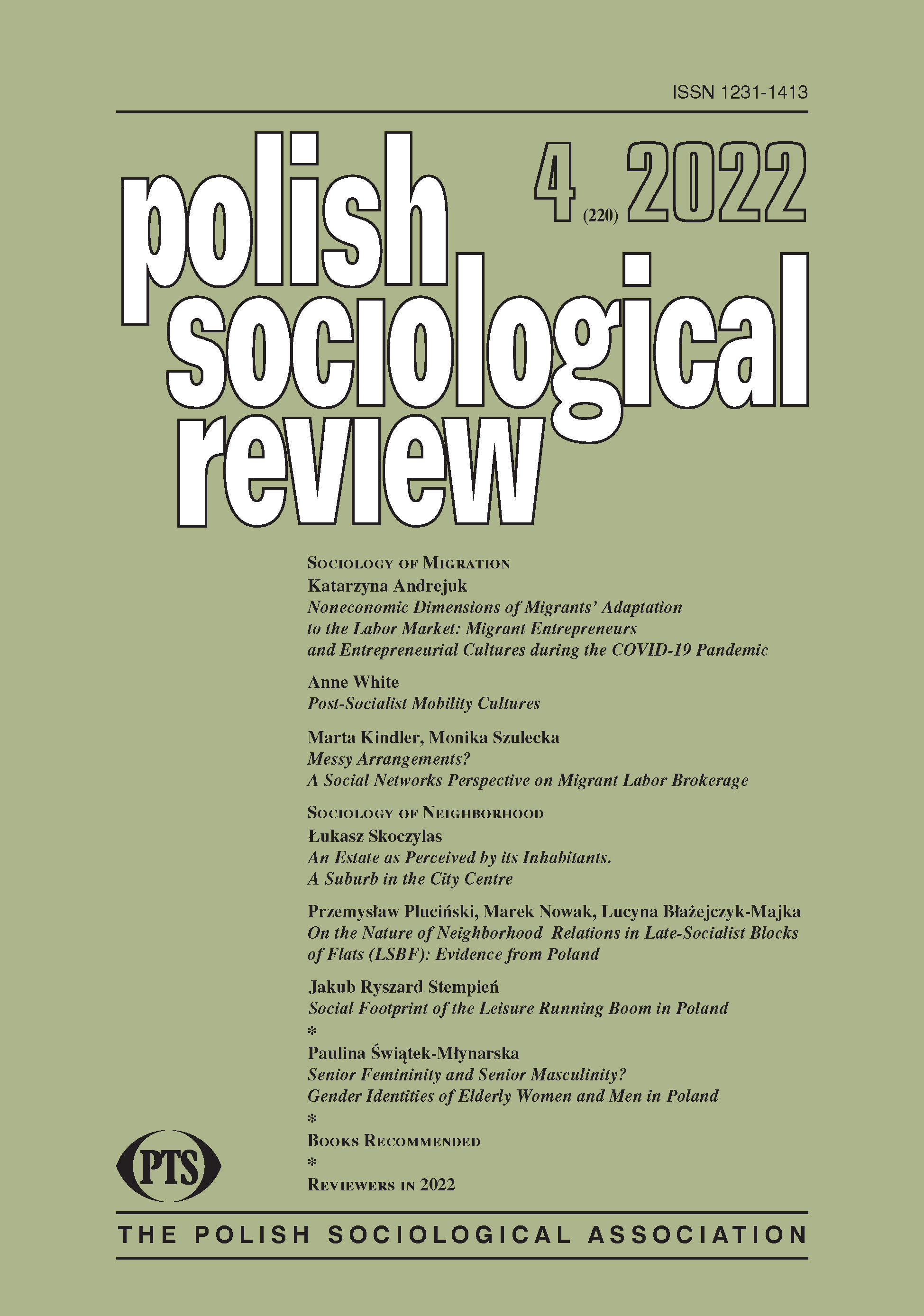On the Nature of Neighborhood Relations
in Late-Socialist Blocks of Flats (LSBF): Evidence from Poland
On the Nature of Neighborhood Relations
in Late-Socialist Blocks of Flats (LSBF): Evidence from Poland
Author(s): Przemysław Pluciński, Marek Nowak, Lucyna Błażejczyk-MajkaSubject(s): Social Sciences, Sociology
Published by: Polskie Towarzystwo Socjologiczne
Keywords: neighborhood circles; invisible ties; late-socialist modernism; housing
Summary/Abstract: The paper analyses the neighborhood relations within late-socialist blocks of flats (LSBF) incontemporary Poland. LSBF were a response to the housing famine of the post-war years and were constructedwith the ideas and tools provided by the followers of Le Corbusier’s modernism. LSBF were part of latesocialisthousing policy. They still constitute a very important element of the urban landscape and have served asa source of inspiration for subsequent development projects. This paper attempts to conceptualize neighborhoodsin LSBF. It analyses the historical context of LSBF and presents the results of empirical studies conducted inthree different-sized locations: a small town (Wronki), a large city (Poznan), and a metropolis and at the sametime the country’s capital (Warsaw). The paper employs comparative statistical analysis, considering variablesthat may affect neighborhood specificity. The results of our study indicate a relatively high degree of vitality inneighborhood ties among residents in LSBFs
Journal: Polish Sociological Review
- Issue Year: 220/2022
- Issue No: 4
- Page Range: 503-524
- Page Count: 22
- Language: English

